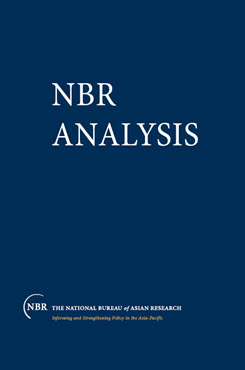The Crisis in Burma/Myanmar
Foreign Aid as a Tool for Democratization
It is time that anyone who is genuinely concerned about helping Burma and its people match their commitment to principles with a pragmatic search for ways to overcome the political deadlock and address the complex emergencies facing the country.
For the past 15 years, the U.S. government has taken a “principled” approach to Burma, [1] using coercive diplomacy and economic sanctions in an attempt to force the military to transfer power to a democratic civilian government. The results have been less than impressive. The military rulers are more entrenched today, and more confident, than when they took power in 1988; the pro–democracy movement—although it maintains broad popular support—has lost much of its momentum; and relations between the government and the National League for Democracy (NLD) have deteriorated, as have socio–economic conditions for the general population. The situation is getting worse, not better. It is time that anyone who is genuinely concerned about helping Burma and its people match their commitment to principles with a pragmatic search for ways to overcome the political deadlock and address the complex emergencies facing the country.
The recent crackdown on the NLD sadly reflects deep–rooted structures of power and interests that cannot simply be wished away. Closer attention must be paid to the structural obstacles to change, in particular to the military’s political orientation and the balance of power between the government and pro–democracy forces.
The Military’s Political Orientation
The Burmese military’s involvement in politics is older than the institution itself. Many of the first generation of military leaders were engaged in the independence movement in the 1930s and began their military careers in the Burma Independence Army, which was trained by Japanese occupation forces during World War II to fight the British. The outbreak of multiple insurgencies immediately after independence in 1948 made the elected government dependent on the army, which came to enjoy considerable autonomy as it undertook state and nation–building measures, especially in remote areas of the country. These experiences, coupled with failures in civilian governance and the relative success of the military caretaker government (1958–60), set the stage for the 1962 military coup and subsequent attempts to strengthen central state control under military leadership—a trend which continues today.
While Burma’s brief democratic era in the 1950s may seem like ancient history, the Burmese officer corps still believes it was a disastrous experience to be avoided at all costs. Successive generations of military officers have nurtured the belief that the army won Burma’s freedom from the British and has protected it since then against self–serving politicians and ethnic nationalists bent on secession. The army has thus developed a
[1] This paper uses “Burma,” the original English name of the country, which is more commonly known in the United States than its official name “Myanmar.”


